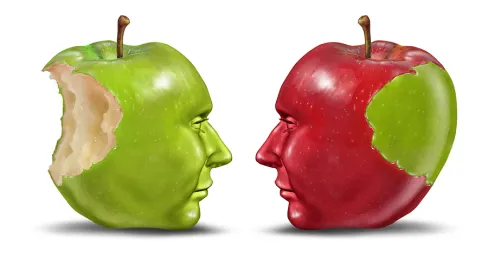A California jury recently awarded Apple $538.6 million in total damages for patent infringement by Samsung. This is the latest development in the patent battle between smartphone industry titans that began in 2011 and took another step towards completion. The verdict arrived after five days of deliberations and seven months after Judge Koh ordered a second trial to determine appropriate damages in light of the U.S. Supreme Court decision in December of 2016. The jury attributed $533.3 million for the infringement of Apple’s design patents and $5.3 million for infringement of Apple’s utility patents.
As we have covered here before, Apple originally filed this patent infringement action in the U.S. District Court for the Northern District of California in 2011, alleging that Samsung’s smartphones infringed three of Apple’s design patents, D593,087, D618,677, and D604,305. The design patents cover a black rectangular front face with rounded corners, a rectangular front face with rounded corners and a raised rim, and a grid of 16 colorful icons on a black screen. Judge Koh presided over the dispute. The jury found that Samsung infringed all three design patents, and the district court entered final judgment awarding $399 million for the infringement. The Federal Circuit upheld the lower court’s judgment on the amount of damages for infringement of the design patents, and Samsung filed a petition for certiorari to the Supreme Court.
The Supreme Court reversed, explaining that, within the meaning of a 35 U.S.C. § 289 damages inquiry, the phrase “article of manufacture” need not be limited to the end product sold to the consumer, but may be a smaller component of that product. Samsung Elecs. Co. v. Apple Inc., 137 S. Ct. 429 (2016). The Supreme Court set aside the $399 million damage award, which represented the entire profit from the sale of the infringing Samsung smartphones. Samsung argued that had the jury been able to consider components of a smartphone as the article of manufacture the resulting damage award would have been smaller. As it turned out, Samsung was wrong. When the jury considered the components of the smartphone, it found that Samsung owes Apple even more – $140 million more.
In the instructions to the jury, Judge Koh adopted a four-factor test to determine damages, essentially adopting the Solicitor General’s test and rejecting Samsung’s simpler two-step test. The four factor test instructed jurors to consider the following:
-
The scope of the design claimed in Apple’s patent, including the drawing and written description;
-
The relative prominence of the design within the product as a whole;
-
Whether the design is conceptually distinct from the product as a whole; and
-
The physical relationship between the patented design and the rest of the product, including whether the design pertains to a component that a user or seller can physically separate from the product as a whole, and whether the design is embodied in a component that is manufactured separately from the rest of the product, or if the component can be sold separately.
Apple sought about $1 billion in damages – what a 2012 jury awarded them for Samsung’s infringement of these design patents. Samsung, on the other hand, argued that it should pay only $28 million. The amount of damages awarded suggests that the jury believed the design patents covered more than mere components of the smartphone and also shows that design patents can be an important part of a patent portfolio.




 />i
/>i
